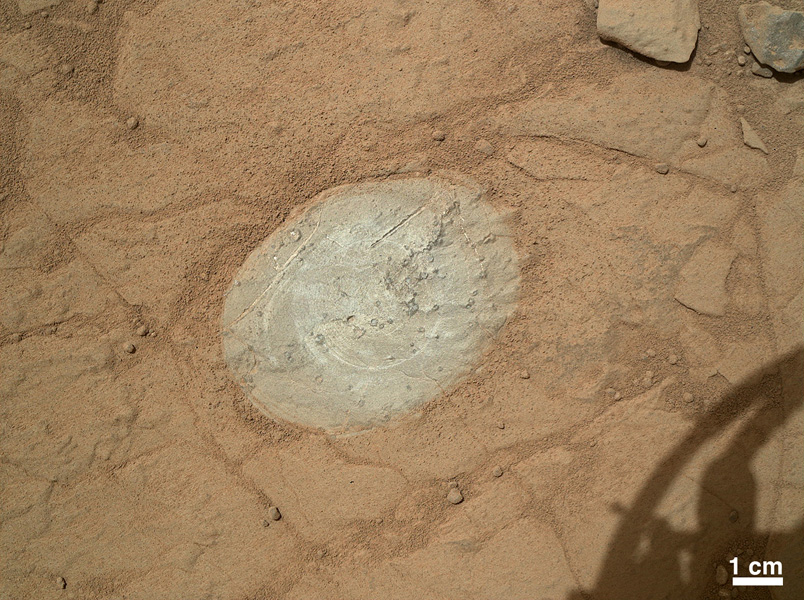
Mars has long been known as the red planet, but with the latest imagery of the planet surface taken MSL Curiosity, it actually appears to be white just beneath a red dust layer
This red dust layer covers the entire surface. But the first data about it came with the rovers Spirit and Opportunity which both analyzed the red dust. This analysis indicates that the Martian surface looks reddish primarily because of this ubiquitous dust layer that consists of plagioclase feldspar and zeolite, along with minor pyroxene and olivine components.
The fact that the planet appears to be red has been a great source of human imagination for a very long time indeed, with the Egyptians naming one of their gods after Mars “Har decher” (The red one) and so it also influenced Indian astrology.
________________
Physical properties of the Mars Exploration Rover landing sites as inferred from Mini-TES–derived thermal inertia
First Use of Mars Rover Curiosity’s Dust Removal Tool
________________________________






















